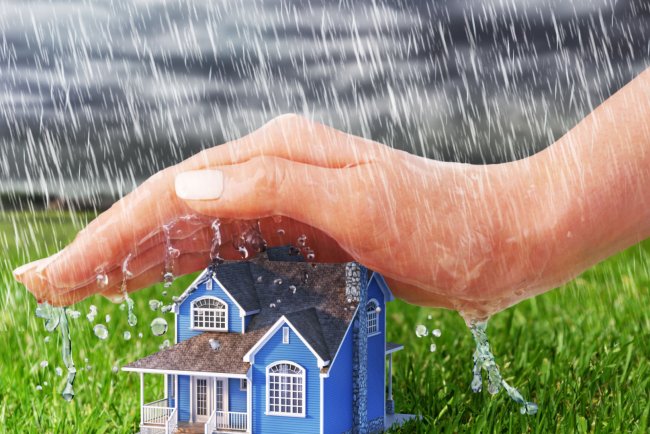FEMA Flood Zones
By familiarizing yourself with the different flood zone classifications, accessing flood maps, and implementing protective measures, you can better prepare for and mitigate the impacts of flooding.

Flooding is a natural disaster that can have devastating impacts on communities and individuals. Understanding FEMA flood zones is crucial for homeowners, property investors, and anyone living in areas susceptible to flooding. This guide delves into the details of FEMA flood zones, including their definitions, classifications, implications for insurance, and how to protect your property.
What Are FEMA Flood Zones?
FEMA (Federal Emergency Management Agency) flood zones are designated areas that reflect the level of flood risk based on historical data, geographic location, and other environmental factors. These zones are determined using flood maps called Flood Insurance Rate Maps (FIRMs), which categorize areas by their likelihood of flooding.
Types of FEMA Flood Zones
FEMA flood zones are classified into different categories, each representing varying levels of flood risk. The main flood zones include:
-
Zone A: This zone includes areas with a high risk of flooding, but no detailed analysis has been performed to determine base flood elevations (BFEs). Zone A is divided into subcategories such as:
- Zone AE: Areas where detailed base flood elevations are available. These areas are at high risk of flooding.
- Zone AH: Areas with shallow flooding, usually one to three feet deep. BFEs are provided, and the flooding is generally from ponding or local drainage.
-
Zone V: This zone includes coastal areas with a high risk of flooding due to storm surge. Similar to Zone A, Zone V is divided into:
- Zone VE: Coastal areas with detailed base flood elevations provided. These areas are at high risk from storm surge and wave action.
- Zone V1-V30: Coastal areas with varying flood risks. These zones are numbered to indicate different flood risks within the general Zone V area.
-
Zone X: This zone is for areas with a lower risk of flooding compared to Zones A and V. It includes:
- Zone X (shaded): Moderate-risk areas, often referred to as 500-year flood zones. These areas have a moderate risk of flooding but are not considered as high-risk as Zones A and V.
- Zone X (unshaded): Low-risk areas, often referred to as the 1000-year flood zone. These areas have a minimal risk of flooding.
-
Zone D: This zone includes areas where flood risk is undetermined. Flood hazards are unknown due to a lack of sufficient data.
How FEMA Determines Flood Zones
FEMA uses a combination of historical data, hydrologic and hydraulic modeling, and geographic information system (GIS) technology to determine flood zones. The process includes:
- Historical Data Analysis: Reviewing past flood events and their impacts to understand patterns and risks.
- Hydrologic and Hydraulic Modeling: Using mathematical models to simulate how water flows and behaves in different conditions, including various rainfall intensities and topographies.
- Field Surveys: Conducting on-the-ground surveys to gather data on elevation, land use, and existing flood protection measures.
- GIS Technology: Analyzing spatial data to map flood risks and incorporate various geographic factors into flood zone designations.
Implications of Living in Different Flood Zones
Living in a FEMA-designated flood zone has significant implications, particularly concerning flood insurance requirements and property values. Here’s how different zones affect homeowners and property owners:
-
Insurance Requirements: Properties located in high-risk flood zones (Zones A and V) typically require flood insurance if they have a mortgage backed by a federally regulated or insured lender. Flood insurance is highly recommended for properties in moderate-risk areas (Zone X shaded) and optional for low-risk areas (Zone X unshaded).
-
Property Values: Flood zone designations can impact property values. Properties in high-risk flood zones may have lower values due to the increased risk of damage and higher insurance premiums. Conversely, properties in lower-risk zones may have higher values due to reduced insurance costs and perceived safety.
-
Building Codes and Regulations: Properties in high-risk flood zones are subject to stricter building codes and regulations to minimize flood damage. These regulations may include requirements for elevated foundations, flood vents, and specific construction materials.
Flood Insurance and FEMA’s NFIP
The National Flood Insurance Program (NFIP), managed by FEMA, provides flood insurance to property owners in participating communities. Here’s what you need to know:
-
Coverage: NFIP flood insurance covers damages to buildings and contents caused by flooding. It includes protection for structural elements, such as foundations and walls, as well as personal belongings, such as furniture and electronics.
-
Policy Types: NFIP offers two main types of policies:
- Building Property Coverage: Covers the structure of the building, including its foundation, walls, and roof.
- Personal Property Coverage: Covers personal belongings, such as furniture, clothing, and appliances.
-
Premiums: Flood insurance premiums vary based on factors such as the flood zone designation, the property’s elevation, and the building’s construction. Properties in high-risk flood zones typically have higher premiums.
-
Claims Process: In the event of a flood, policyholders should document the damage, contact their insurance provider, and follow the claims process outlined in their policy. FEMA provides guidance and support throughout the claims process.
Flood Zone Maps and How to Access Them
FEMA’s Flood Insurance Rate Maps (FIRMs) provide detailed information about flood zones and risks. Here’s how to access and use these maps:
-
Accessing FIRMs: FIRMs are available online through FEMA’s Flood Map Service Center (FMSC). You can search for your property by address or geographic location to view the applicable flood zone and associated risks.
-
Reading FIRMs: FIRMs include various details, such as flood zone designations, base flood elevations, and floodplain boundaries. Familiarize yourself with the map symbols and legends to understand your property’s flood risk.
-
Updating FIRMs: Flood zone maps are periodically updated to reflect changes in flood risks and land use. Check for updates to ensure you have the most current information about your property’s flood zone designation.
Protecting Your Property from Flood Damage
Regardless of your flood zone designation, taking steps to protect your property from flood damage is essential. Here are some strategies:
-
Elevation: Elevate your home and critical utilities above the base flood elevation to reduce the risk of flood damage. This may involve raising the foundation, installing flood vents, or relocating utilities to higher levels.
-
Floodproofing: Implement floodproofing measures, such as installing sump pumps, sealing basement walls, and using flood-resistant materials.
-
Insurance: Purchase flood insurance to protect your property and belongings from flood damage. Even if you’re in a lower-risk zone, flood insurance provides valuable protection.
-
Landscaping: Use landscaping techniques to manage water flow and reduce erosion. Install drainage systems, berms, and swales to direct water away from your property.
-
Emergency Preparedness: Develop an emergency plan and ensure you have an emergency kit with essential supplies. Stay informed about weather conditions and potential flood alerts.
Understanding Flood Risk Beyond FEMA Zones
While FEMA flood zones provide a useful framework for understanding flood risk, it’s essential to consider other factors that may affect your property’s vulnerability to flooding:
-
Local Topography: The elevation and slope of your property can impact flood risk. Properties located in low-lying or flat areas may be more susceptible to flooding.
-
Flood History: Research the flood history of your area to understand past flood events and their impacts. Local government agencies and historical records can provide valuable insights.
-
Climate Change: Climate change can increase the frequency and severity of flooding events. Consider the potential impacts of rising sea levels, extreme weather events, and changing precipitation patterns on your property.
Understanding FEMA flood zones is essential for managing flood risk and protecting your property. By familiarizing yourself with the different flood zone classifications, accessing flood maps, and implementing protective measures, you can better prepare for and mitigate the impacts of flooding.
Whether you’re a homeowner, property investor, or community planner, staying informed about flood risks and insurance options will help you make informed decisions and safeguard your property from potential flood damage. For personalized advice and assistance, consider consulting with floodplain management professionals and insurance experts.
FAQs on FEMA Flood Zones
1. What are FEMA flood zones and how are they determined?
FEMA flood zones are designated areas indicating the risk of flooding based on historical data, geographic location, and environmental factors. They are determined using flood maps called Flood Insurance Rate Maps (FIRMs), which utilize historical data, hydrologic and hydraulic modeling, field surveys, and GIS technology to categorize flood risks.
2. What are the main types of FEMA flood zones?
FEMA flood zones are classified into several categories:
- Zone A: High-risk areas with no detailed base flood elevations. Subcategories include Zone AE (with base flood elevations), Zone AH (shallow flooding), and Zone AO (areas with shallow flooding).
- Zone V: Coastal areas with high risk due to storm surge and wave action. Subcategories include Zone VE (with base flood elevations) and Zone V1-V30 (varied risk levels).
- Zone X: Lower-risk areas, including Zone X (shaded) for moderate risk and Zone X (unshaded) for minimal risk.
- Zone D: Areas where flood risk is undetermined due to insufficient data.
3. How does living in different FEMA flood zones impact insurance requirements?
Properties in high-risk flood zones (Zones A and V) generally require flood insurance if they have a mortgage from a federally regulated lender. Flood insurance is recommended for properties in moderate-risk zones (Zone X shaded) and optional for low-risk zones (Zone X unshaded). Flood insurance helps protect against damage and may be required by lenders in high-risk areas.
4. Does FEMA provide flood insurance, and how does it work?
FEMA does not provide flood insurance directly but manages the National Flood Insurance Program (NFIP). NFIP offers flood insurance policies through participating communities and insurers. Coverage includes protection for building structures and personal property against flood damage. Premiums vary based on flood zone, property elevation, and building characteristics.
5. How can I access FEMA flood maps and understand my flood zone?
FEMA flood maps are available online through the Flood Map Service Center (FMSC). You can search for your property by address or location to view its flood zone and risk level. Understanding the map involves reviewing flood zone designations, base flood elevations, and floodplain boundaries using map symbols and legends.
6. What steps should I take if my property’s flood zone designation changes?
If your property’s flood zone designation changes, you should review your flood insurance coverage and update your policy if necessary. Consult with local authorities and FEMA to understand any changes in building regulations or floodplain management practices and adjust your property protections accordingly.
7. How can I appeal a flood zone designation if I believe it is incorrect?
To appeal a flood zone designation, you can request a Letter of Map Change (LOMC) from FEMA. This process involves providing evidence and documentation to support your claim that the designation is incorrect. Detailed information on the appeal process can be found on FEMA’s website.
8. Are there any assistance programs available for flood mitigation and protection?
Yes, FEMA offers various grants and assistance programs for flood mitigation, such as the Hazard Mitigation Grant Program (HMGP) and the Flood Mitigation Assistance (FMA) program. These programs provide financial support for projects that reduce flood risks and enhance property protection. Check FEMA’s website for eligibility criteria and application details.
9. How often are FEMA flood maps updated?
FEMA flood maps are updated periodically to reflect new data, changes in land use, and advancements in flood modeling. The frequency of updates depends on various factors, including changes in flood risk and local development. For the most current information, check FEMA’s Flood Map Service Center.
10. Can I still purchase flood insurance if my property is in a low-risk flood zone?
Yes, you can purchase flood insurance for properties in low-risk flood zones (Zone X unshaded). Although not required, flood insurance is a prudent measure to protect against unexpected flooding. It provides coverage for damages that standard home insurance policies may not include.
11. What are some strategies to protect my property from flood damage?
Protect your property by elevating structures and utilities above the base flood elevation, implementing floodproofing measures (such as sump pumps and flood-resistant materials), and using landscaping techniques to manage water flow. Also, consider purchasing flood insurance and developing an emergency preparedness plan.
12. What should I do if I experience flood damage?
If you experience flood damage, document the damage with photos or videos, contact your insurance provider, and take steps to prevent further damage. Keep records of all repairs and expenses, and follow the claims process outlined in your insurance policy.
13. How do climate change and local topography affect flood risk?
Climate change can increase the frequency and severity of flooding events due to rising sea levels and more extreme weather conditions. Local topography, such as elevation and slope, also affects flood risk. Low-lying or flat areas may be more susceptible to flooding, even if they are not in a high-risk flood zone.
14. Are there any grants available to help with flood damage repairs?
Yes, FEMA provides grants for flood damage repairs through programs like the Individual Assistance (IA) program. This program offers financial aid for disaster-related expenses and repairs to primary residences. Check FEMA’s website for eligibility and application details.
15. How can I stay informed about flood risks and alerts in my area?
Stay informed by subscribing to weather alerts, monitoring local news, and using emergency alert systems. You can also sign up for notifications from local emergency management agencies and FEMA to receive updates on flood risks and weather conditions.
What's Your Reaction?



















